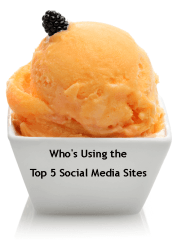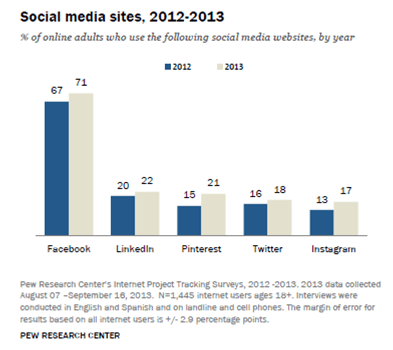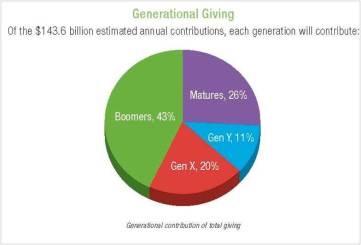Generational Marketing
Does Your Marketing Reflect Older Customers? 10 Tips
 Did you know that 2 billion people worldwide will be 60 years and older by 2050, according to the World Health Organization? That’s one in five people!
Did you know that 2 billion people worldwide will be 60 years and older by 2050, according to the World Health Organization? That’s one in five people!
In the U.S., the number of Americans 55 and over will grow to 112 million in 2030, according to U.S. Census figures. And, while the aging population is growing in number, their spending power is growing too, as many have more time to shop and spend than their younger counterparts, says a new Nielsen study.
Now, take these facts into account, too:
- Businesses started by those ages 55 to 64 in 2013 accounted for nearly one-quarter of all new businesses started, according to the Kauffman Index of Entrepreneurial Activity.
- Three-quarters of U.S. adult workers in 2013 believed they will continue working past retirement age, with 40% saying they will do so because they want to, and 35% because they will have to, according to Gallup.
But, here’s the disconnect - Continue reading
The Latest Scoop on Who’s Using the Top 5 Social Media Sites
 If you’re using social media marketing in your small-medium business or nonprofit, then it helps to know where your target audiences are hanging out. According to the newest social networking survey by Pew Research Center’s Internet & American Life Project, 42% of online adults now use multiple social networking sites.
If you’re using social media marketing in your small-medium business or nonprofit, then it helps to know where your target audiences are hanging out. According to the newest social networking survey by Pew Research Center’s Internet & American Life Project, 42% of online adults now use multiple social networking sites.
First off, 73% of online adults in the U.S. are using a social networking site and each of the top 5 sites has experienced an increase from 2012 - 2013.

Here are some of the findings to help you review your marketing demographic targeting: Continue reading
Is Your Nonprofit Marketing to Boomers Effectively? 7 Nonprofit Boomer Marketing Tips

The Next Generation of American Giving, Blackbaud 2013
Did you know that Baby Boomers contribute 43% of all charitable giving? In fact, Baby Boomers control 70% of Americans’ disposable income, yet only 5% of advertising is geared toward their age group.
Is your nonprofit organization adequately targeting them and marketing to them effectively?
Let’s look at some important data on marketing to Boomers - those born between 1946 and 1964 (ages 49-67) who are poised to make up half the U.S. population in 2017. (Nielsen) Continue reading
How Well is Your Nonprofit Engaging Millennials?
 Millennials may not represent your organization’s biggest donors, but they definitely make excellent volunteers, more frequent small-gift givers, and brand champions. Yet, many nonprofits are missing the boat on engaging this generation in ways that can work successfully.
Millennials may not represent your organization’s biggest donors, but they definitely make excellent volunteers, more frequent small-gift givers, and brand champions. Yet, many nonprofits are missing the boat on engaging this generation in ways that can work successfully.
According to The Case Foundation’s 2013 Millennial Impact Report, Millennials aren’t interested in structures, institutions, and organizations, but rather in the people they help and the issues they support.
Other important information about Millennials:
- Millennials prefer to connect via technology. They use websites and search engines primarily for information-gathering, finding volunteer opportunities, and donating online. They rely on social media and email for communicating and connecting with their networks, while mobile technology gives them instant access to all these channels.
- Millennials share in micro ways. Their interactions with nonprofit organizations are likely to be immediate and impulsive. When inspired, they will act quickly in a number of ways, from small donations to short volunteer stints, provided that the opportunities are present and the barriers to entry are low.
- Millennials facilitate (and rely on) peer influence. Peer influence plays an important role in motivating Millennials to volunteer, attend events, participate in programs, and give. Even if Millennials can’t give as much as other demographic groups, they nonetheless are willing to help raise funds for causes they care about, usually by calling on friends and family.
- Millennials volunteer along a continuum of support. Millennials are most likely to get hands-on with causes they care about when organizations offer a range of volunteer opportunities, from one-time commitments to long-term, pro-bono skills-based opportunities. Ultimately, they want to lend their knowledge, expertise, and time to help nonprofits. And when this generation forms long-term volunteer relationships, they tend to give larger gifts, as well as encourage their friends and family to contribute, too.
- Millennials give to have an impact. Millennials are consistent in their desire to see how dollars translate into people helped. They want their contributions, no matter the type or amount, to help achieve tangible results for a cause. Yes, members of this generation are more likely to give smaller amounts to multiple organizations than to focus their giving on any one recipient. But the stronger their relationship with an organization, the more likely they are to give larger gifts over time.
The study’s top takeaway: Millennials first support causes they are passionate about (rather than institutions), so it’s up to organizations to inspire them and show them that their support can make a tangible difference on the wider issue.
The question for nonprofits then becomes: How can we fully invest in this generation, immerse them in the cause, and maximize the impact of their interest, time, and giving?
Answers: Connecting with them via technology, offering micro ways to get involved and give, facilitating peer influence, offering a continuum of volunteer options, and sharing the results of their donations.
How? Build Your Organization:
B
Be unified as an organization in working with this generation. Help all leaders, both volunteer and paid, understand and agree on the need to engage Millennials.
U
Understand their environment and its complexities. Appreciate its current state, what this generation experienced growing up, and how rapid advancements of technology and culture have shaped their involvement with your organization.
I
Identify key changemakers, those Millennials seeking to make a difference with your organization. These could be staff, board members, volunteers, and donors. Don’t be distracted by stories of Millennials who don’t care. These are “outliers,” and every generation has them. You must find those who want to work with you and make change happen.
L
Lead by engagement rather than just by participation. Engagement means you understand how Millennials want to communicate, participate, lead, and challenge the organization to do better. Focus on conversational and relationship involvement with your organization.
D
Determine success. What does Millennial success look like for your organization? Create foundational standards or benchmarks. Create realistic and incremental goals that will not hinder ongoing deployment of Millennial programming.
The report is chock full of data and recommendations, so be sure to download it. When valuable information like this is available to nonprofits for free, it’s worth taking advantage of it and making any necessary adjustments to your marketing strategy.
Is your organization targeting Millennials? How? Has it been successful? If not, why not?
N.B. I’m in the middle of revising my company’s Web site, and one of the new workshops I’ll be offering is entitled, “Nonprofit Customer Engagement in a Multichannel World.”





